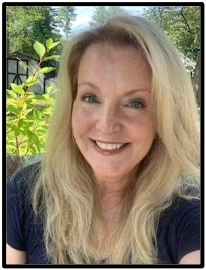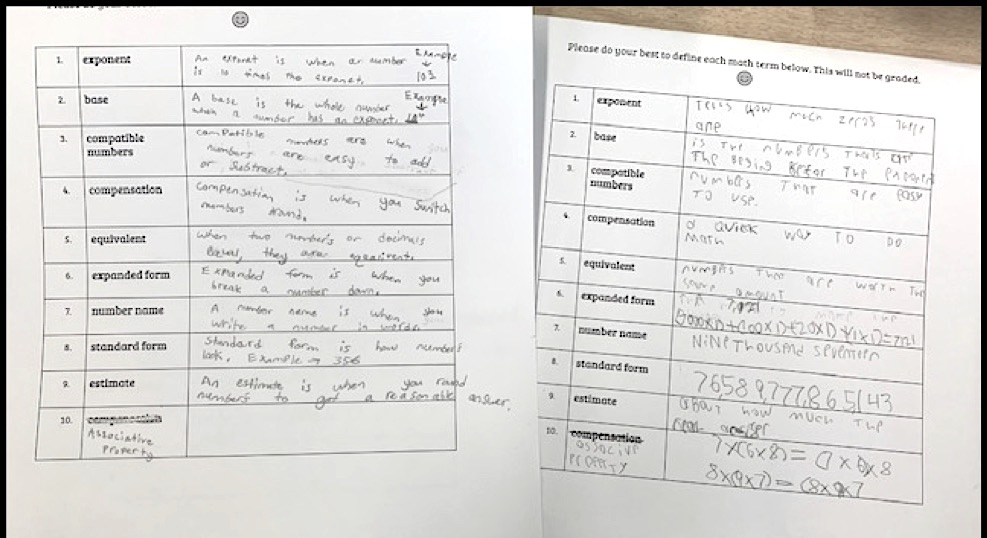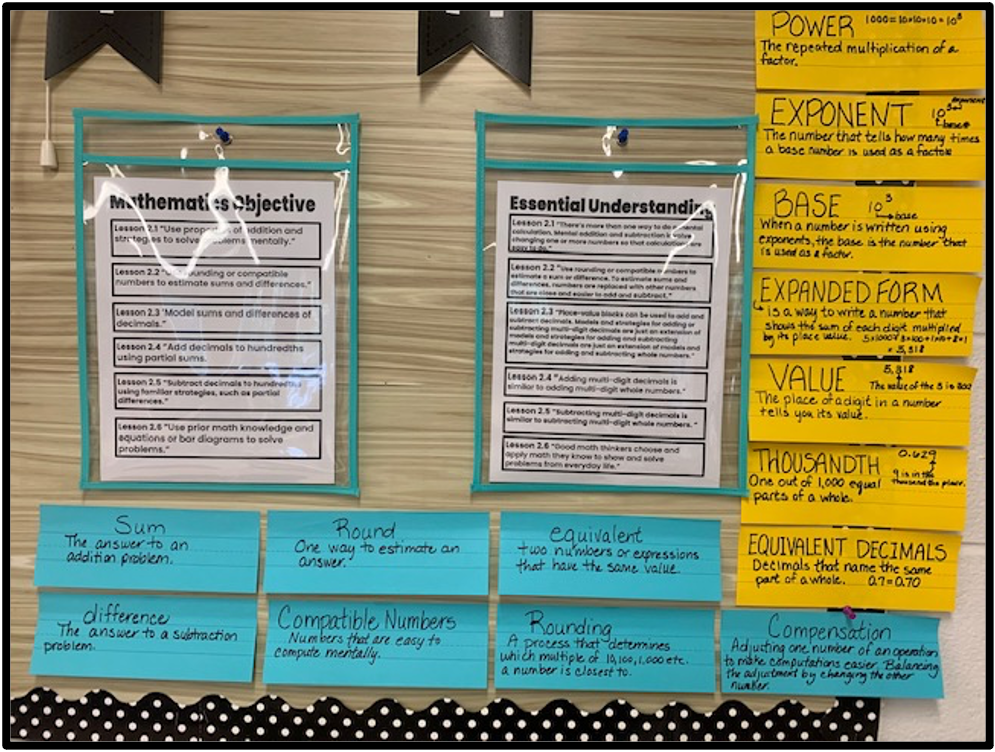Table of Contents
By Kathleen Palmieri

A demanding math curriculum emphasizes conceptual knowledge, procedural talent and fluency working with several operations. But can we really pose purposeful thoughts and facilitate significant mathematical discourse if college students are uncertain of the math phrases?
As the math curriculum advances, so does the terminology that is utilized in each and every device. Even though logic and talent are two critical components in advancing math understanding, pupils also need to have to be immersed in the language of math.
In the past I have questioned how nicely students were being comprehending some of the advanced math terms that are made use of in our math textbooks. Having said that, it was at the beginning of this new faculty calendar year that I definitely observed learners having difficulties to grasp the this means of our math vocabulary.
So I made a decision to do a tiny motion study and compose a record of math terms that students would be anticipated to comprehend as we started to explore this year’s curriculum.
What my investigate discovered
I pulled 10 phrases ranging in complexity from our math textbook to generate a “show what you know” variety of activity. The phrases I selected were:
- exponent
- base
- suitable figures
- compensation
- equivalent
- expanded variety
- selection title
- common form
- estimate, and
- Associative House of Addition
Wanting again on how college students carried out with a distinct phrase trouble on the to start with exam, I was curious to see if there was a correlation amongst not knowing math terminology and achievement in resolving the dilemma.
What I found was that 40% of the pupils experienced a satisfactory knowing of most of the words and phrases and could publish a essential definition, 30% could use quantities to exhibit their comprehending, 20% could define 7 of the significantly less complicated phrases, and 10% definitely struggled to show knowing of most terms.
What I identified in my students’ responses was that studying math terminology is much more than researching a listing of words. It is a great deal much more of an architecture of studying exactly where concepts want to be explored and a pathway of knowing needs to be blazed ahead of a mathematical term can be hooked up to create true this means. (Simply click to extend)

Involving college students to establish approaches
Immediately after looking at by way of my students’ responses, the subsequent stage was to have a course assembly, explore the math phrases, and have students brainstorm methods to assist “pump up” our comprehension of math vocabulary. Right here is what we made a decision to do as a class:
►Student math glossary: Prior to beginning a new subject, as a course we will consider a “Topic walk” and pull out any math terms that stand out as critical to know. This will be extra than a vocabulary record as students will have an energetic function in choosing what will go into their glossary as nicely as locating, talking about, and recording definitions with illustrations.
►Graphic Organizers: In language arts college students are common with using graphic organizers that highlight a vocabulary phrase in the middle. Close to the word are sentences and other similar terms. Working with this type of organizer, the college students will do the exact with the math phrases.
►Math Term of the Day/Week: Dependent on the length of a individual principle, as a class we arrived up with obtaining a math word to concentration on for a working day or for a 7 days. To include a fun twist, learners will tally how numerous occasions the term is used and how it is applied. Examples incorporate in a term problem, all through a course discussion, in a small group math exercise, etcetera.
►Student-developed vocabulary posters: Adding artwork to math vocabulary would seem to have genuinely engaged my students. Bubble letters, examples of troubles and definitions with graphics are truly exciting “math” things to do. Students present and explain their expression and then proudly display screen their poster in the classroom.
►Math phrase wall: This was an too much to handle hit thought during our dialogue. Students felt term partitions served them try to remember vocabulary in looking through. So they made a decision they needed to make a math phrase wall. Students now choose turns crafting on substantial, vibrant Submit-its and affixing the phrases to just one of the classroom bulletin boards.

►Closely evaluate phrase issues as a class: Pull out the crucial text, produce a potent composed reaction, resolve the dilemma.
►Incorporate math phrase game titles: Use the format of Pictionary the place pupils can draw clues or “What’s My Time period?” in which college students verbally give clues as others pay attention.
Improved vocabulary = better math functionality!
My most critical takeaway: encouraging the use of math vocabulary in our daily math classes, conversations, and group function has a sizable payoff in university student success. Considerably like examining and using context clues to create indicating as a reader, the language of math is a important ingredient in getting conceptual knowing in arithmetic.
Kathleen Palmieri is a Nationwide Board Licensed Teacher and NBCT Qualified Mastering facilitator. She is a fifth grade educator in upstate New York who evaluations and writes consistently for MiddleWeb. With a passion for literacy and mastering in the classroom, she participates in a variety of crafting workshops, curriculum writing endeavors, and math presentations. As a lifelong learner, she is an avid reader and researcher of academic methods and approaches. Collaborating with colleagues and globally on Twitter and growing her education adventures at www.kathleenpalmieri.com are ongoing practices.


More Stories
The Ultimate Guide to Landing the Best Online Teaching Jobs
Unveiling the Path: How to Start Your Career as an Online Teacher
Unveiling the Significance: Why CTE Credentials Matter More Than Ever